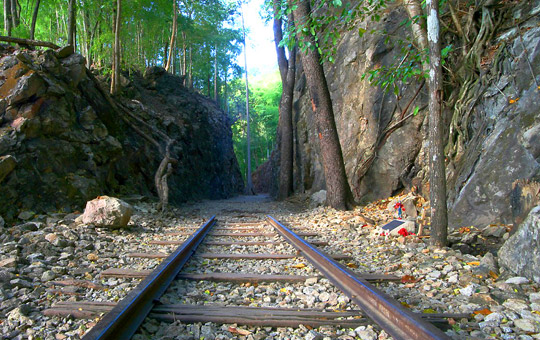Kanchanaburi seeks recognition of the Death Railway as a World Heritage Site

Kanchanaburi is pushing for its historically significant Death Railway to become a World Heritage Site.
A public hearing was held yesterday at the River Kwai Hotel in the western border province to hear the views of local residents. The event was presided over by Kanchanaburi Governor Jirakiat Poomsawat.
Almost 52 per cent of local residents backed a proposal by a national committee on the protection of cultural world heritage sites to have the railway line recognised as a Unesco World Heritage Site, according to results of a survey by the province’s Cultural Office and Rajabhat Kanchanaburi University.
A World Heritage Site is a landmark or area selected by the United Nations Educational, Scientific and Cultural Organisation (Unesco) as having cultural, historical, scientific or other form of significance, and is legally protected by international treaties.
The proposal, which got the backing from the Fine Arts Department, was first made in February 2014 by the national committee, which resolved to seek Unesco recognition for Death Railway and 10 other sites around Thailand, said Pisun Chansilp, Kanchanaburi’s chief cultural official.
Following yesterday’s public hearing, the relevant authorities will next prepare a report to apply for the recognition of Death Railway as a World Heritage Site, said Tharapong Srisuchart, director of the Office of Archaeology.
He added that a survey by his agency had discovered train parts and structures on the route.

The 415-kilometre Death Railway, also known as the Burma Railway, was built during World War II by Japan, with forced labour from Allied prisoners and Southeast Asian civilian labourers.
The line originally linked Thailand’s Ratchaburi and Thanbyuzayat in Burma, which today is known as Myanmar. It was closed in 1947, but the section between Nong Pla Duk in Ratchaburi and Nam Tok in Kanchanaburi was reopened 10 years later.
One of the most notable portions of the entire railway line is the world-famous Bridge on the River Kwai, which crosses Khwae Yai River and is a major tourist attraction.
“Kwai” is a corrupted spelling of the Thai transliteration “Khwae”, which means tributary.

STORY: The Nation
Latest Thailand News
Follow The Thaiger on Google News:


























